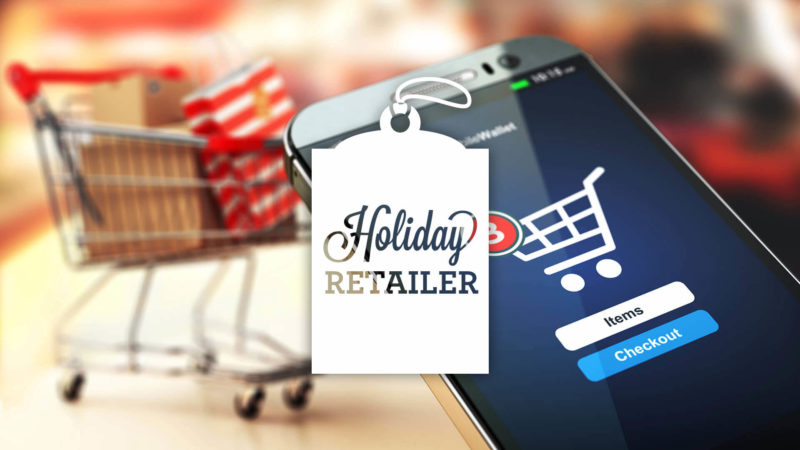Singles Day was a global shopping phenomenon, but will US marketers hop on board?
Singles Day may have come and gone, but that doesn't mean you can't make it part of your 2018 marketing strategy. Contributor Shani Rosenfelder explains why US marketers shouldn't ignore the holiday.

The holiday shopping season has become increasingly competitive, with brands fighting hard to win over consumers with the right messaging and clever promotions. The season is starting earlier than it has in the past, with many retailers trying to get a head start on the shopping frenzy.
Timing is particularly important in mobile app marketing. Your goal should be to get customers to download your app before peak shopping days, so you can then focus on driving purchases via push notifications, retargeting campaigns and email marketing. In fact, our company’s research has shown that app installs begin to climb after Halloween, and users that are acquired earlier in the season are more valuable than those who download your app after Thanksgiving.
Singles Day is on November 11 — an excellent time for marketers to embrace a shopping promotion. Let’s take a look at the future potential for this holiday in North America, and how marketers can use it to drive app installs before prime shopping season begins, as well as to generate more revenue.
What is Singles Day?
Singles Day is the world’s largest shopping day. It has been described as “Amazon’s Prime Day — on steroids.” This year, it smashed previous global records, hitting $23.5 billion in sales, more than 40 percent higher than last year’s total.
Singles Day is a celebration of single living, sort of like the antithesis to Valentine’s Day. The date, 11/11, was chosen because the number one represents someone who is unattached.
Singles Day is often associated with Alibaba, China’s ecommerce giant. Although it didn’t invent the occasion, it did have the foresight to begin promoting it. Since 2009, Alibaba has been celebrating November 11 as a day for singles to treat themselves and a day for everyone to celebrate culture and commerce.
Alibaba has been tapping celebs from around the world to help promote the event, and marketers are following suit. This year, for example, Nicole Kidman and Pharrell attended Alibaba’s gala event to celebrate the occasion.
So does all of this indicate that North Americans have embraced the holiday or that they are going to? According to our shopping app data, Singles Day is driving more purchases in North America than ever before, but much of that growth is coming from the region’s large immigrant populations. (The majority of the apps were based in Asia.)
Singles Day revenue increases in North America
Our shopping app data also showed that app installs and purchases increased globally on Singles Day compared with last year. App installs hit their peak on Singles Day itself, but the entire week leading up to it also was stronger than usual. Of the nearly 2.5 million app installs and 5 million purchases, more than 1 million app installs and 3 million purchases were from Southeast Asia. That’s a large chunk of the activity, certainly, but it also means that Singles Day is taking off in places beyond its place of origin.
In fact, Singles Day 2017 showed growth in purchases and revenue compared to Singles Day 2016 across all regions. In Southeast Asia, revenue grew by 107 percent this year, compared to last, according to our numbers; but interestingly, Singles Day also generated 68 percent more revenue in North America this year than it did in 2016.
These increases could indicate that the holiday is gaining traction, and that app marketers are paying more attention to it. However, the revenue and install increases in North America were most likely primarily driven by its large immigrant population, specifically, Asian-Americans.
Many US brands are still overlooking the shopping potential of 11/11. Think about it: How many Singles Day promotions did you receive this year? I bet not many.
An opportunity for marketers
There’s no reason why mainstream brands can’t embrace Singles Day. It’s a fairly brand-safe message. Why not encourage people to celebrate their single status and pamper themselves a bit? The “Treat Yo Self” mantra already has meaning in the North American market, particularly among millennials. Companies can piggyback on the global movement as well as invest in their own promotions.
Singles Day is an “excuse” to connect with your audience and to offer smart discounts and fun messaging. It’s also a way to stand out. Marketers will be competing with far fewer promotions than they do on Black Friday, for example.
You also should consider using Singles Day as a way to drive app installs before the peak shopping season begins. The new customers you earn on Singles Day could become repeat buyers, incentivized to do holiday shopping with you, too.
I suggest brands act fast to step up and own the holiday before their competitors do. As you create your 2018 marketing strategy, consider including Singles Day campaigns. If recent data is any indication, the holiday is only going to continue to rise in popularity around the world.
Opinions expressed in this article are those of the guest author and not necessarily MarTech. Staff authors are listed here.
Related stories